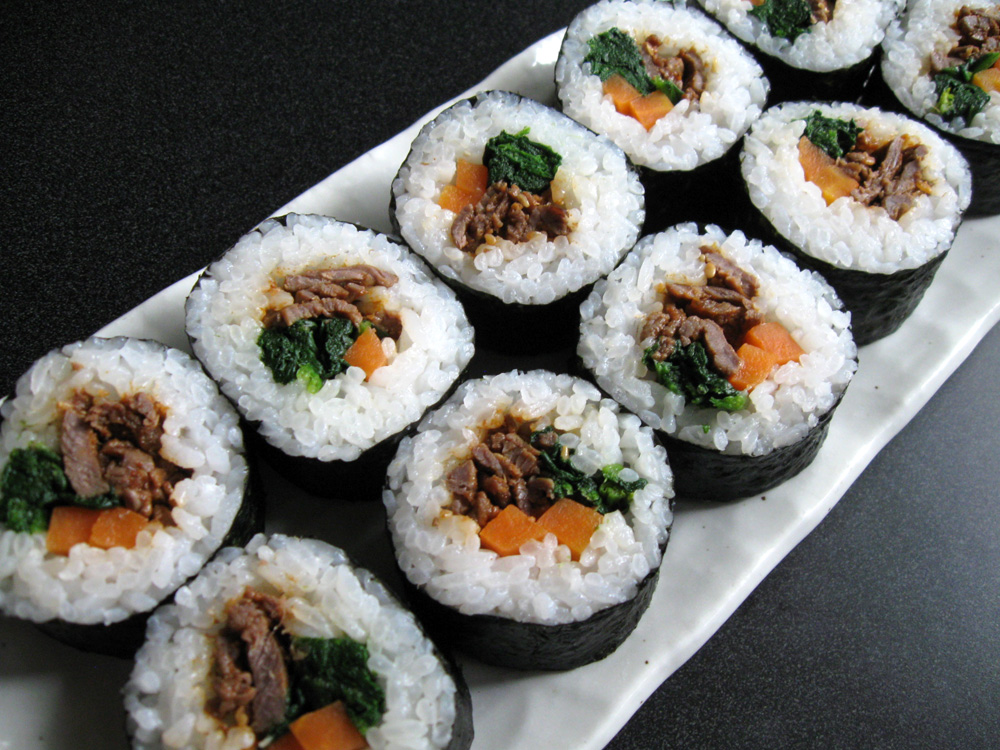
Sushi Rolls shops can be seen everywhere in Australia. They are very popular and they are becoming more creative with the fillings. It seems meat are more popular than raw fish. Here are my Korean-inspired Yakiniku Sushi Rolls.
Makes
5 to 6 Rolls
Ingredients
3 cups (180ml cup) Short Grain Sushi Rice
72 ml Rice Vinegar
60g Sugar
1 teaspoon Salt
5 to 6 Nori (Seaweed Sheets)
1 Carrot
1/2 bunch Spinach
Soy Sauce & Sesame Oil for seasoning Spinach
300g thinly sliced Beef
1 teaspoon Sesame Oil
Yakiniku Sauce of your choice *sweet type recommended, OR use the sauce below
Yakiniku Sauce
1 tablespoon Toasted Sesame Seeds *lightly ground
1 clove Garlic *grated
1 small piece Ginger *grated
2 tablespoons Soy Sauce
1 tablespoon Mirin
1 tablespoon Sugar
Make Sushi Rice
- Cook Rice as normal and allow it to steam for 10 minutes.
- Make Sushi Vinegar by mixing Rice Vinegar, Sugar and Salt. Pour it over the HOT rice in the pot, then empty it into a large mixing bowl.
- Mix it well gently and thoroughly, fanning the Rice with a fan or piece of cardboard to help the rice cool quickly. Cover with a damp cloth to stop the rice drying out.
Fillings
- Cut Carrot into strips and cook in salted water.
- Wash Spinach, blanch in boiling water, cool in cold water, then drain well. Season lightly with a small amount of Soy Sauce and Sesame Oil.
- Heat Sesame Oil in a frying pan over high heat, cook Beef slices and season with Yakiniku Sauce. Cook until the sauce is gone, then cool.
How To Roll
- Place a sheet of Nori on Makisu (bamboo mat) . You can try with Plastic Food Wrap or Foil if you don’t have Makisu.
- Spread out cooled Sushi Rice on the Nori sheet. You need to leave some empty space at the end.
- Place some Beef and Carrot strips. Squeeze some Spinach to remove excess liquid, then place on the Beef, then start to roll.
- Lift the nearest end of Makisu and fold over rice and filling, matching the end of the spread rice to the other end, then press. Pull the Makisu end up and roll it, pressing it a couple of times.
- Cut into bite sized pieces with a sharp knife. The knife becomes very sticky, so you need to wipe it frequently with a wet cloth or paper towel.

Leave a Reply